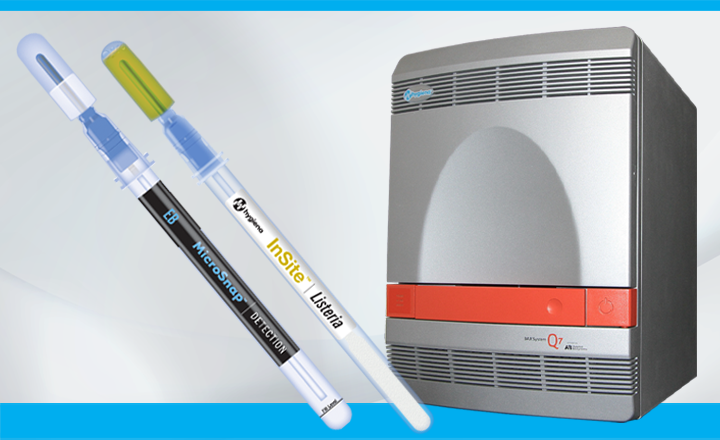BIOTECON Diagnostics...
Rapid Microbial Scre...
16th February 2022 Content supplied by: Hygiena International Ltd
Steps to Shorten and Simplify Food Pathogen Testing
In food processing environments, pathogens can cause contamination of the food product and the facilities and lead to recalls. Therefore, facilities must establish and maintain robust environmental monitoring and pathogen testing programs. Typically, these processes involve sample collection, traditional culture methods, followed by organism confirmation by additional testing. At a minimum, culture growth takes 24 – 48 h and confirmation can take an additional 24 – 72 hours. This can delay product release and impact other products if produced on the same processing lines.
What if facilities could have results the same day? Today, technology has now made this possible. Two examples are described below - one for Salmonella detection and quantification and a second for Listeria detection. Both methods provide results in a single day, in fact, in less than 10-12 hours for Salmonella.
In the poultry industry, physical and chemical interventions are recommended to reduce Salmonella prevalence since Salmonella can be introduced anywhere during processing. A simple, rapid method was designed to detect contamination and quantitate the amount of Salmonella present.
Samples were collected at each step of processing and tested using Hygiena™ MicroSnap™ Total and MicroSnap™ EB devices. These devices utilize a novel bioluminogenic reaction to detect viable bacteria after only 6 hours of incubation. The light-generating signal is then quantified using a Hygiena™ luminometer (EnSURE™ Touch). Results will indicate if a contaminating organism is present or not. From these sample cultures, aliquots can be directly used in the Hygiena ™ BAX® System Real-Time PCR Assay for Salmonella to confirm if Salmonella is present. By following the SalQuant™ method, MicroSnap™ cultures can be quantified on the BAX® System in a matter of hours, shortening result time to 10 hours or less.
When it comes to Listeria, the bacteria can attach easily to food contact surfaces and be transferred to other food products that run on the same line. Therefore, to prevent cross-contamination, all food contact surfaces must be cleaned thoroughly and tested to ensure no pathogens are present. Again, traditional plating methods can take days, if not longer to determine pathogen presence. A simpler, more rapid solution involves combining an environmental swabbing method with PCR, providing results in just over one day.
Food contact surfaces are commonly swabbed to determine if they are clean. Samples obtained this way can provide results in 24 -48 hours when using the Hygiena™ InSite™ Listeria and InSite™ L. mono Glo devices. In fact, at 48 hours, presumptive positive Listeria species results can be examined for fluorescence using a UV light, indicating the presence of Listeria monocytogenes. However, when paired with the BAX® System Standard and Real-time PCR Assays for Listeria or L. mono, samples taken from the InSite™ devices at 24 hours were confirmed by PCR using the BAX® System assays.
For both methods, no significant difference was seen between the standard (reference) methods for Salmonella or Listeria detection demonstrating the ability to detect pathogen contamination within a shortened time frame using rapid, simple testing. In addition, quantitation of Salmonella was possible in less than a day. Both methods save time and money when it comes to pathogen detection and help ensure a safe product is delivered to consumers.
Visit Hygiena or click on the Request Information button below.
Tags:
Date Published: 16th February 2022
Source article link: View
BIOTECON Diagnostics Confirms its COVID-19
Rapid Microbial Screening – One



